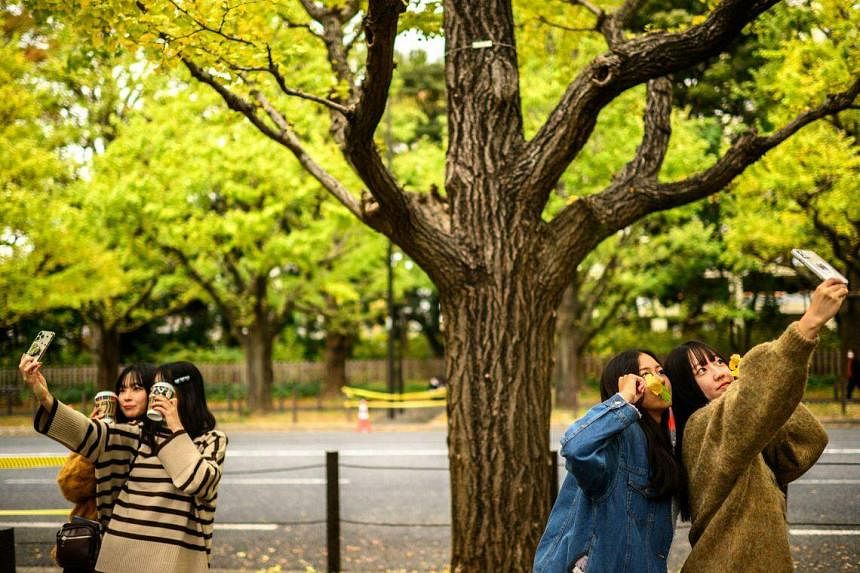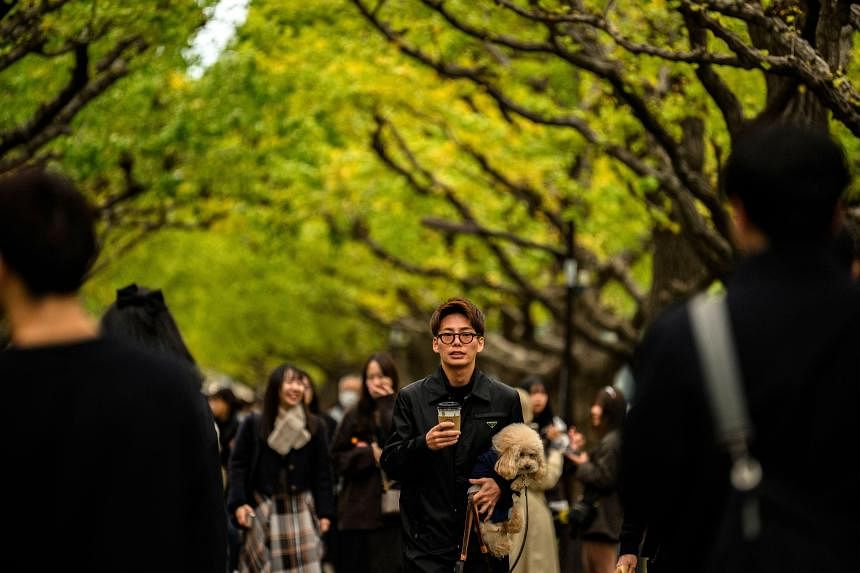First, it was record-breaking heat in the summer of 2023. Then, on Nov 7, the temperature in Tokyo hit 27.5 deg C, beating a century-old record for November.
Now, Japan is likely to see its much-cherished spectacle of colourful autumn leaves a little later than expected.
According to the country’s weather service, the arrival of the vibrant autumnal foliage in most major cities is expected to be between two and nine days later than usual.
In Sapporo, Hokkaido, where the first autumn leaves are usually seen, the peak in 2023 did not arrive until Nov 13, which was 16 days later than usual.
Mr Hiroki Ito, a weather forecaster at the agency, said predictions are based on past data.
He said the colour of the leaves changes when the mercury falls below 20 deg C, and deepens below 10 deg C, The Japan Times quoted him as saying.
For 2023, the season is starting later “because temperatures were quite high in September, a trend that followed into October”.
However, the process also depends on the region, plant and number of sunshine hours.
As a temperate country, Japan has four distinct seasons. According to the meteorological agency, autumn in Japan normally lasts from the beginning of September until the end of November.
But climate change is altering such weather patterns.

On Nov 9, the weather service said Japan was experiencing an unusually warm autumn.
The mercury hit 27.5 deg C just past noon in Tokyo on Nov 7, creeping past the 27.3 deg C mark set in 1923 for November.
Weather officials also noted that most of the snow on the summit of Mount Fuji had melted, an NHK report said.
Global “boiling”, as the United Nations has described it, means summer is starting earlier and lasting longer, effectively squeezing spring and autumn.
In Japan’s case, some scientists warn the country could start experiencing only two seasons, Japan Today reported.
Seasonal experiences are being disrupted, along with the rhythm of people’s everyday lives.
For example, summertime fireworks festivals are now being held in October instead of August to avoid increasingly uncomfortable temperatures.
Businesses that rely on seasonal demand suffer as well.
During spring, billions of dollars are generated in economic activity during Japan’s sakura, or cherry blossom, season.
Incorrect forecasts have proven to be damaging. In 2007, the meteorological agency was forced to issue a public apology after wrongly predicting blooming dates and causing “some trouble”, a Bloomberg report in March said.

